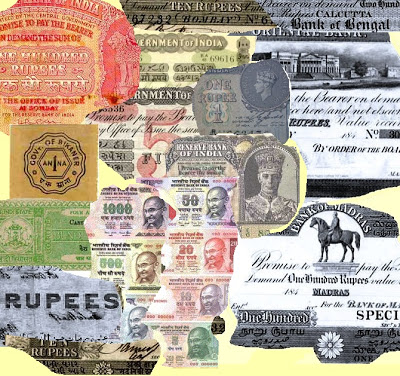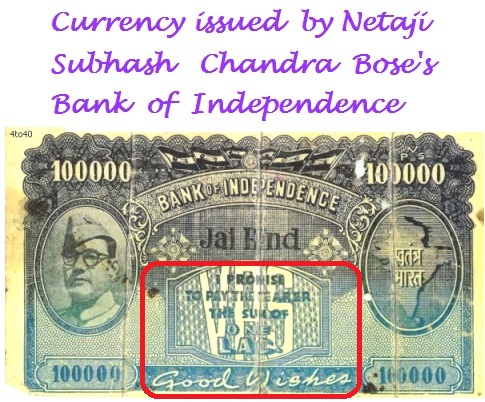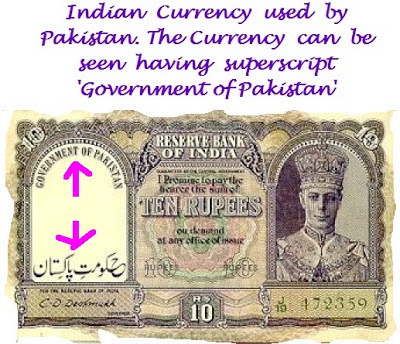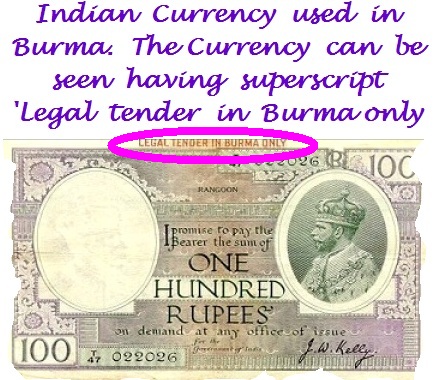
Origin and growth of Bank Notes and Currencies -10
Origin and growth of
Bank Notes and Currencies – 10
(Written by N.R. Jayaraman)

The National Bank of Azad Hind, also known as the Bank of Independence, was reportedly established by Subhash Chandra Bose in Rangoon, Burma which was meant to manage the funds donated by the Indian community from across the world and the same bank must have issued currency as promissory notes.
In this connection I place before the readers, an interesting historic news that revealed the existence of the Currency issued by Subhash Chandra Bose.

On January 22, 2010 an article appeared in The Hindu, Bhopal edition which read as below:
A currency issued by Netaji Subhash Chandra Bose’s Bank of Independence has been made public here on the eve of his 113th birth anniversary, leading to excitement among his supporters.
In the 1980s, Ram Kishore Dubey, a retired contractor with the State Irrigation Department, discovered the note in his grandfather’s Ramayana book, but did not realise its historical significance till recently.
“My grandfather, Praagilal, worked for Netaji in the Azaad Hind Fauj and passed away in 1958,” says the 63-year-old Dubey.
“He used to stay away from the family for months on end working covertly for the INA [Indian National Army] in the Bundelkhand region on a recruitment drive for its Jhansi Ki Rani Regiment, led by Lakshmi Swaminathan. He gave up his land for the cause of the army and so Netaji rewarded him with this note promising him the amount in independent India.”
The currency, of denomination one lakh, has a photograph of Bose on the left side and a pre-independence map of the Indian territory with the inscription “ swatantra bharat” in Hindi on the other. In the middle are inscribed the words “ Jai Hind” in English, with the words “I promise to pay the bearer the sum of one Lac” below it.
On the top of the note is a series of flags of the Azaad Hind Fauj over a bold inscription saying “Bank of Independence” with “good wishes” inscribed at the bottom.
– Unquote
Another interesting news in the history of Currency is that in the year 1919 when the Colombo ( Now Sri Lanka) Banks ran short of Currencies and experienced shortage of Silver Coins on account of embargo on export of Silver from India, Colombo concluded a barter like deal with Indian Government. As per the agreement the Bank of Madras would export three million Silver Rupees and Colombo will in turn issue to the Bank of Madras printed Currencies from Colombo and subsequently the deal was successfully carried out.
For many years prior to the formation of the RBI the Indian rupee was used as the official Currency in several areas that were controlled by the Britishers and governed from India .
There have been instances when the Indian Currencies imprinted with text like ‘For use in Pakistan’ have been issued. In the initial years, the Government of Pakistan used super inscribed Indian notes as its Paper Money until they were gradually replaced by Pakistani currency by 1949. The notes contained captions like “Government of Pakistan” in English and “Hukumat e Pakistan” in Urdu. Notes of Rs. 1, 2, 5, 10 and 100 were super inscribed in such a manner.

Initially the Indian notes were over printed , followed by a special series of ‘Burma notes’ of the Reserve Bank of India in 1937. After World War II, upon liberation from the Japanese, Government of Burma constituted a Currency Board which used for many years the Indian Currencies overprinted with ‘Burma Currency Board / Legal Tender in Burma Only’.














Recent Comments